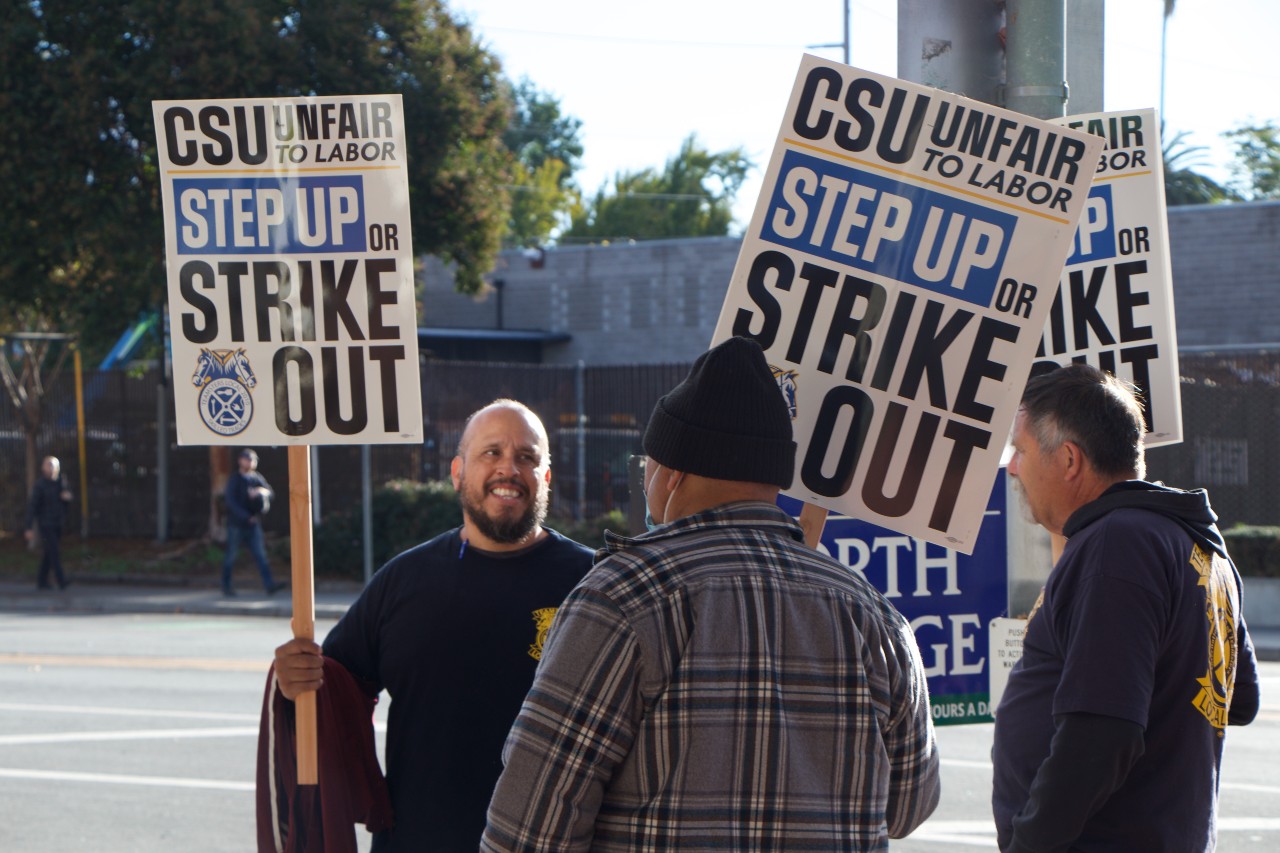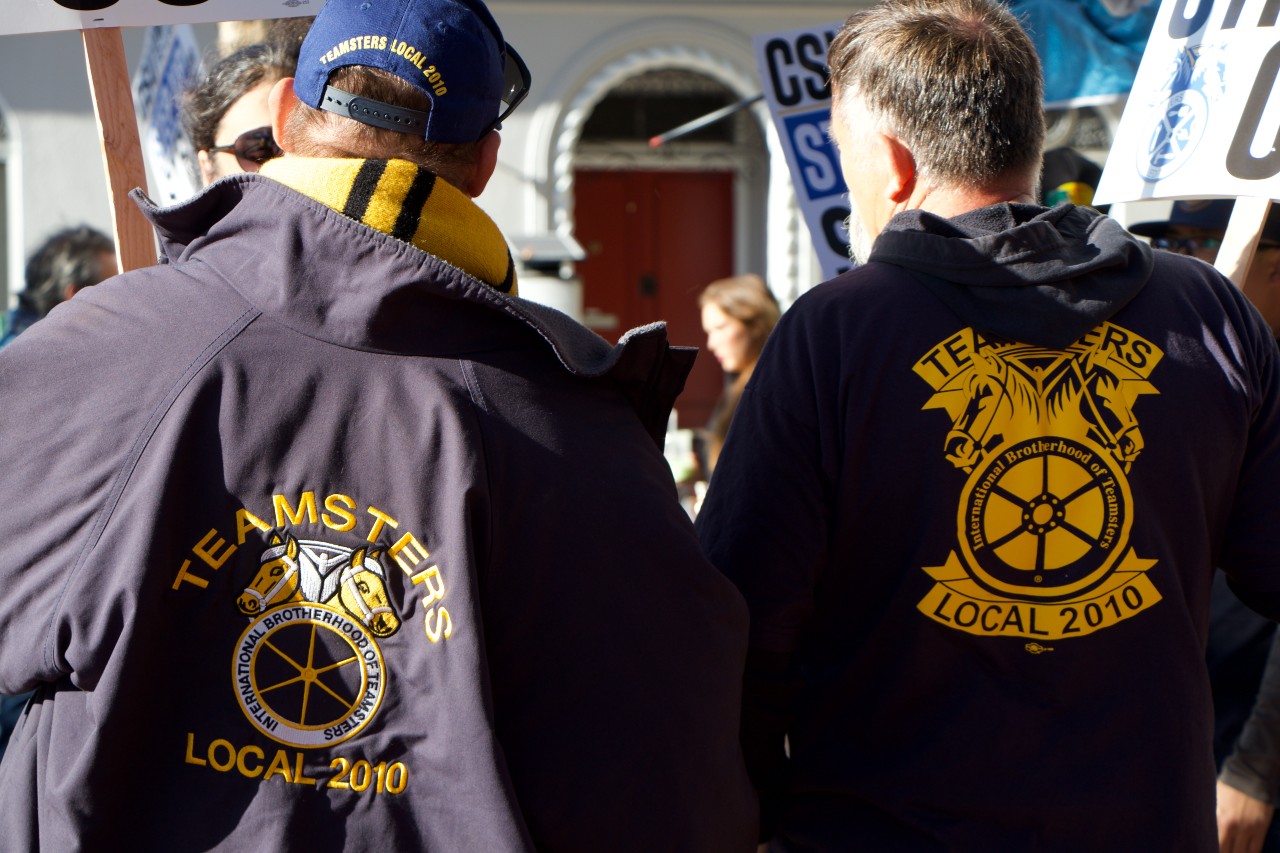
SAN JOSE, Calif – The 90-minute commute to work as an air conditioning refrigeration mechanic at San Jose State University now feels short to Aaron Flores.
During the 80-mile drive from the Central Valley to San Jose, Flores sips his coffee and turns on satellite radio, listening to a few songs or the news, but mostly he focuses on the traffic report. Some mornings accidents pile up and traffic stretches for miles. Those days he’s lucky to make his 7:30 a.m. shift on time even after being on the road for nearly three hours.
After a decade of the drive and job totaling 13-hour days five times a week, Flores admits the commute has grown grueling over the years. “It’s a challenge just to come to work and get home every day,” he said.
The drive used to make sense for him. The pay at San Jose State University was an improvement over his last role at Cal State Stanislaus, and he grew up in San Jose and was happy to return to the area.
But the cost of living crept up and his salary remained the same. “I basically have to live paycheck to paycheck just to get by,” he said.
At San Jose State, Flores is in charge of installing and maintaining heating and air conditioning systems on campus. The job requires him to climb rooftops, crouch in attics and crawl spaces and endure rooms where steam can reach 120 degrees. No matter the season, the environment is uncomfortable year-round.
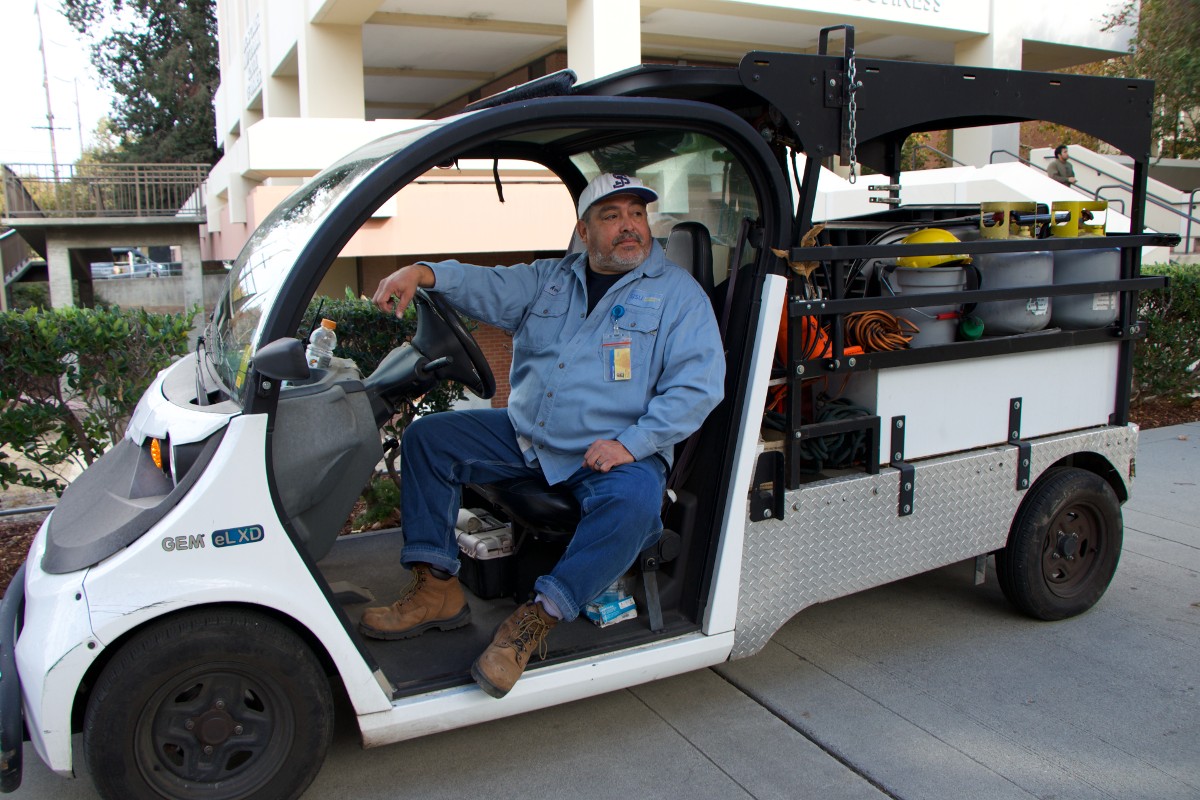
Since the pandemic began, Flores says turnover has increased as many facilities employees chose to quit or retire from SJSU, with several positions still going unfilled.
According to San Jose State, 27 employees have left since May 2020. Currently, the university has 25 vacancies in the facilities department, though 13 of those positions were newly added this year.
Flores notes demand is also growing for utilities upkeep as the campus continues to expand. In fall 2024, SJSU plans to open a new housing facility for 700 students.
He claims it’s clear the California State University system “is not investing in their buildings or their staff.”
That’s why on Nov. 14, Flores and 1,100 skilled trades workers employed by CSUs went on a 24-hour strike to demand a fair wage as their pay lags behind market rate and University of California workers in similar positions.
The people who keep operations running at CSU campuses – mechanics, plumbers, electricians, painters, locksmiths, carpenters and facilities workers – forced maintenance orders to be paused at CSU campuses from 12 a.m. on Nov. 14 to 12 a.m. on Nov. 15. The trades workers represented by Teamsters Local 2010 picketed at 22 of 23 CSU campuses and outside of the CSU Chancellor’s office in Long Beach.
Leading up to the strike, Teamsters Local 2010 filed eight unfair labor practice charges against CSU, with allegations ranging from stalling negotiations, interfering with workers’ rights to engage in union activities and threatening retaliation, among others.
Frustrated by their stagnant salaries, teamsters called for wage increases, a step salary system and for emergency pay that was made available during COVID-19 to be reinstated.
Work Stoppage at San Jose State
On the edge of San Jose State University’s campus on Nov. 14, more than 50 picketers lined several blocks and passed out flyers to students, staff and passersby near the 10th Street Garage on E. San Fernando Street. Teamsters attempted to block deliveries from reaching campus and blew whistles, clanked cowbells and called on cars to honk in support.
Robert Olson, planted on a street corner with a handful of flyers, chatted up any student willing to take a sheet on the strike. Despite spending two decades as a painter at SJSU, he now fears he and his family are one bad month away from being homeless.
“We’re living month to month when we can barely spend enough money to get food for me and my son and my wife, let alone any extracurricular activities,” he exclaimed.
Good benefits and a deep devotion to San Jose State’s campus have kept him at the job, but he knows most painters elsewhere make at least 25% more than he does. And Olson’s longevity at the university has not translated into higher wages. “They just hired a new painter a month ago. He’s a really nice guy, but he’s making the same as me,” he said.
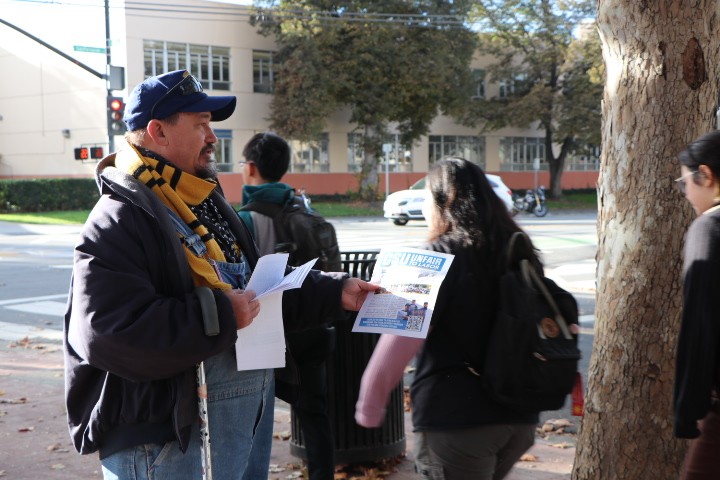
Since 1996, teamsters have had no step salary increases, a pay structure that gives incremental wage bumps each year, resulting in many trades people receiving few raises over the course of their careers. Putting in place a step salary system is a top priority for the teamsters as they bargain for a new contract, said Jason Rabinowitz, the secretary-treasurer of Teamsters Local 2010.
According to the union, CSU teamsters are paid 23% less on average compared to skilled trades workers employed by the UC system.
“Many of our members could go elsewhere and make more, but they have loyalty to the CSU. They sacrifice to serve the CSU because they believe in the mission, but that goodwill has been taken advantage of by the CSU for too long,” said Rabinowitz.
In 2022, a CSU study conducted by Mercer Consulting found that the university system was struggling to retain and attract talent as wages dipped below market rate and growth opportunities dried up for employees. The study stated, “CSU staff salaries have not kept pace with those of the general industry or the higher education sector,” and “CSU does not have a consistent process for advancing pay.”
Contract Negotiations Stalled
The CSU and Teamsters Local 2010 started contract negotiations in January but talks have since stalled.
The teamster’s contract expired on June 30, at which point they were no longer constrained by a no-strike provision in their previous agreement. Four months later on October 30, the union authorized a strike with 94% of voters in favor of protesting “the University’s bad faith bargaining and unfair labor practices.”
CSU offered a 15% compensation pool over a three-year period to Teamsters, with plans to distribute these dollars in various ways, including a 5% salary increase the first year and the establishment of a step salary system. But the union rejected the proposal for not going far enough.
“These increases are insufficient to address the recent spike in inflation and growing pay gaps to comparable work in California,” argued Joseph Meyer, a union representative.
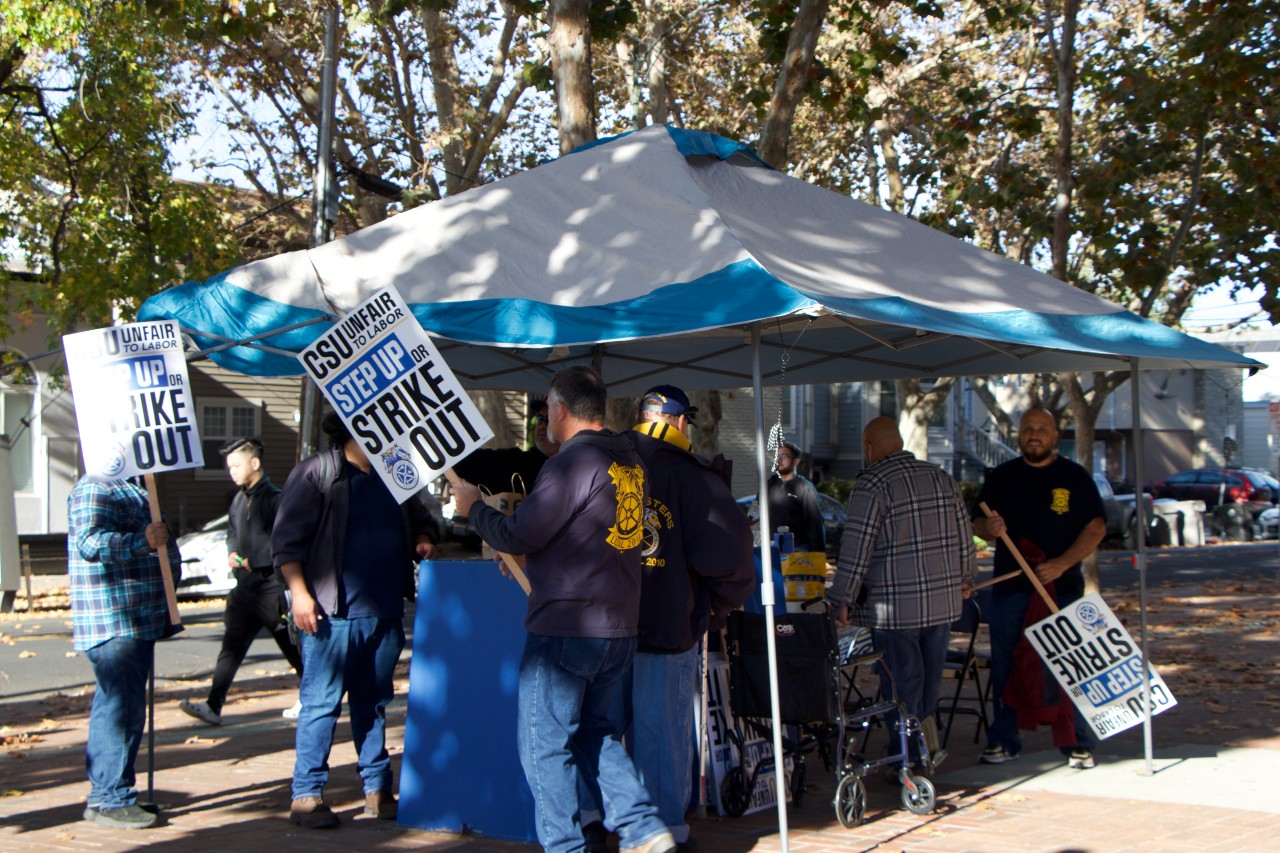
Recently, the Public Employment Relations Board granted CSU’s request to declare an impasse. Under state law, both sides are still engaged in the bargaining process.
Christina Checel, associate vice chancellor of labor and employee relations at CSU, said they’re “looking to provide some general salary increases, and then also have our Teamsters employees be placed on salary steps.”
The Teamsters Local 2010 and the CSU system now move to a fact-finding session, where each party will present their case to a state-appointed factfinder, who will eventually issue a report with a recommended outcome.
Once this occurs over the next month or two, both parties will still have to come to the table to negotiate a solution on their own. In the meantime, teamsters are continuing to work without a contract.
If an impasse stretches on, teamsters say they are determined to reach a good deal, even if that means more time on the picket line in the months ahead.
“Our members deserve a contract, and they deserve it now, not later. And so we’re prepared to take whatever action is necessary in light of the employer’s unfair labor practices, up to and including additional strike action,” Rabinowitz said.
Adrian Antuna, a soft-spoken plumber at San Jose State, expressed the monthly exhaustion he faced watching his paycheck diminish under the strain of rising food and gas prices. He’s received a single raise during his last two years at SJSU, but complained his salary is still far below other universities’ pay scales. Plumbers hired at San Jose State make just under $70,000 a year, according to a recent job listing.
“Everything else goes up. It’s like you’re penny pinching and doing bologna sandwiches almost at the end of the month,” he said.
But if push comes to shove, Antuna said he’ll stand on the picket line for three days, five days, even two weeks if that’s what it takes to strike a fair deal.
“I just feel like as a plumber we get the short end of the stick a lot. And it’s not easy being a service tech plumber. No one wants to deal with those nuisances…But we do it, and we go above and beyond,” he said.
